20 Almost Zero-Calorie Foods That Help You Stay Full & Manage Weight
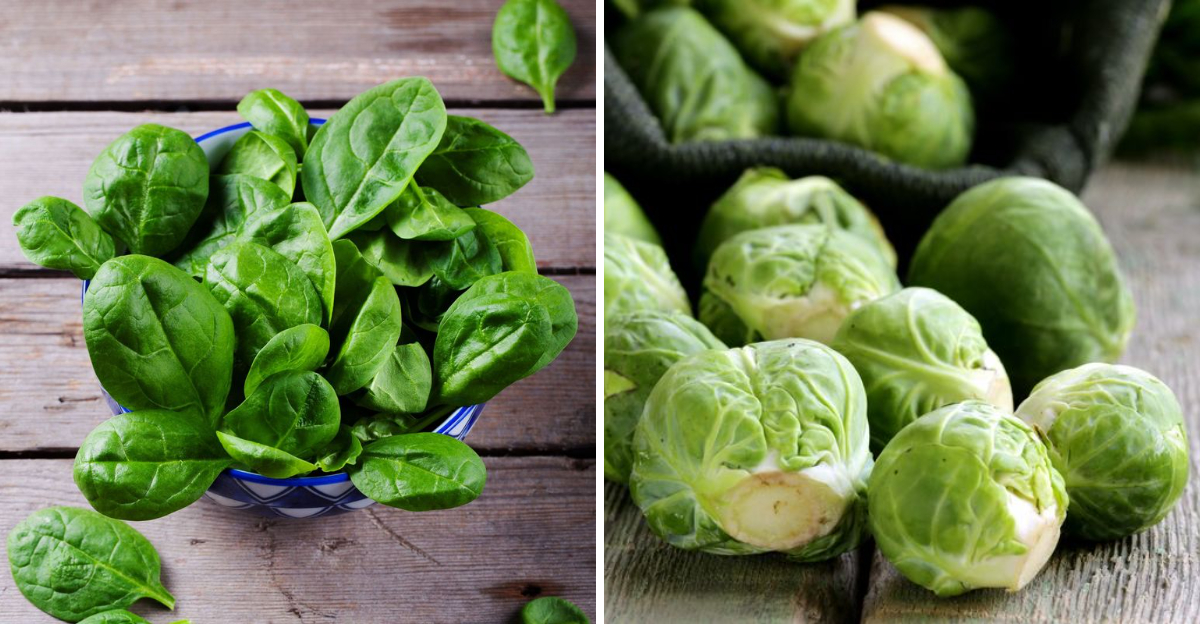
Discover 20 almost zero-calorie foods that not only help you manage weight but also keep you feeling full and satisfied. This list features a variety of fruits, vegetables, and other foods, each with unique nutritional benefits and flavors. Dive into this delicious guide to find out how incorporating these items into your diet can support your weight management journey!
1. Celery
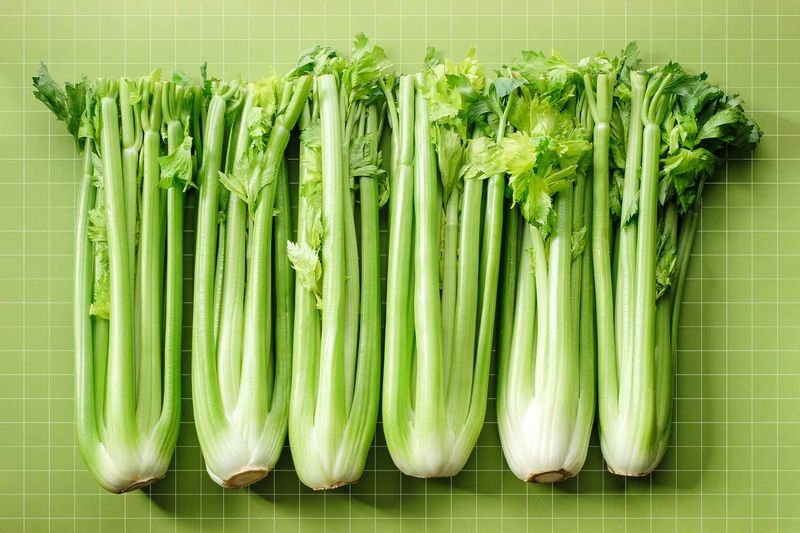
Celery’s crunchy texture and high water content make it a perfect snack for weight management. With only six calories per stalk, celery can be paired with low-calorie dips for added flavor. This refreshing vegetable is rich in dietary fiber, which aids digestion and prolongs the feeling of fullness. Its subtle, slightly peppery taste can complement a variety of dishes, from salads to soups. Celery is also an excellent source of antioxidants and vitamins A, C, and K, contributing to overall health. Enjoy it raw or cooked, as it retains its nutritional benefits in either form.
2. Cucumber
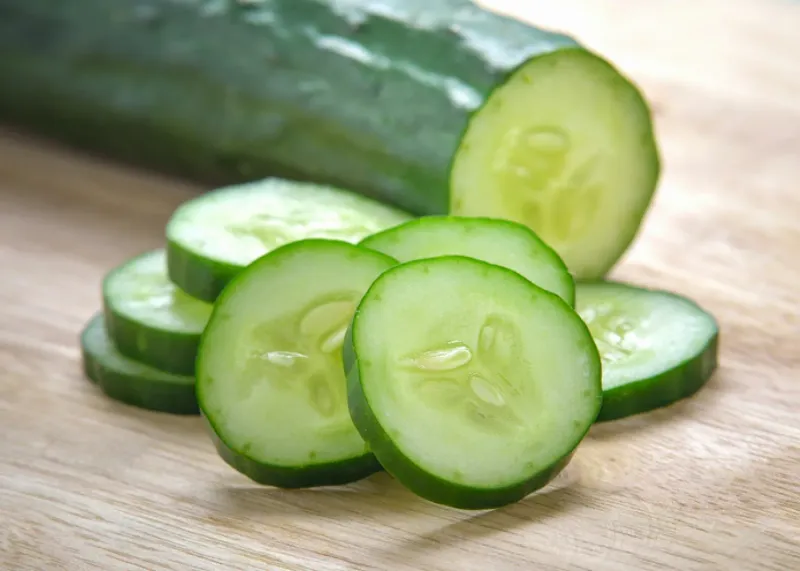
Cucumber’s hydrating nature and mild taste make it an ideal low-calorie food. With only 16 calories per cup, cucumbers are perfect for adding volume to meals without extra calories. Their crisp texture and refreshing taste can enhance any salad or sandwich. Packed with vitamin K, cucumbers support bone health while their fiber content promotes digestion. Enjoy them sliced, diced, or as a base for dips. Cucumbers are also known for their cooling properties, making them a popular choice in spa water and summer dishes.
3. Lettuce
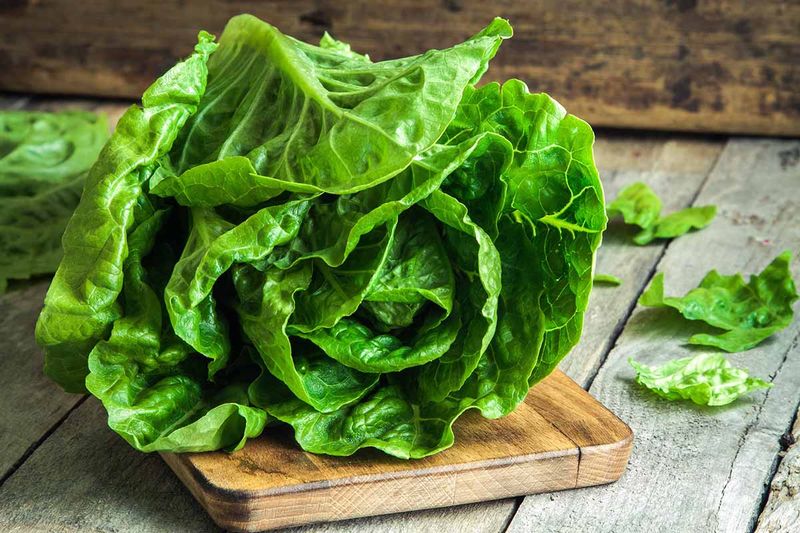
Lettuce is a staple in many weight management diets due to its low calorie and high water content. With just five calories per cup, it adds bulk to meals without increasing caloric intake. Lettuce comes in various types, each offering unique flavors and textures. Its mild, refreshing taste makes it versatile for salads, wraps, and sandwiches. Additionally, lettuce is a good source of vitamins A and K, supporting vision and bone health. Whether you prefer romaine, iceberg, or butterhead, lettuce is a nutritious choice for any meal.
4. Zucchini
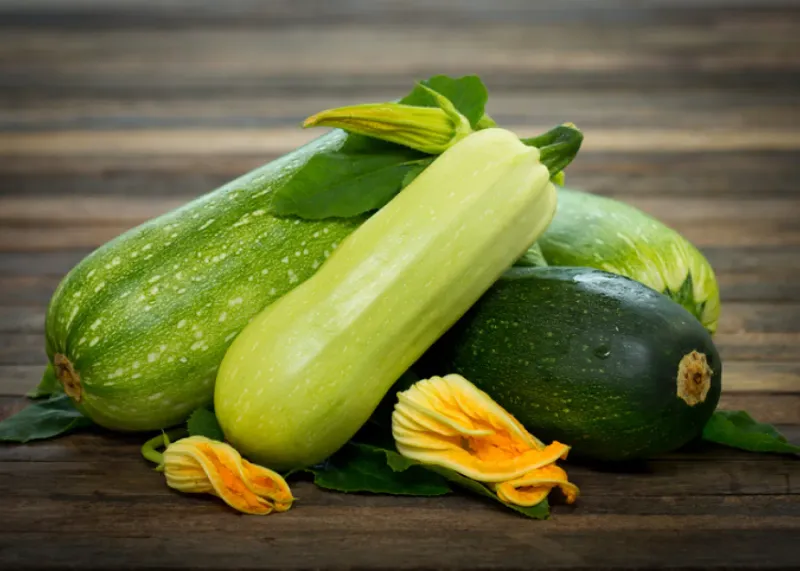
Zucchini is a versatile vegetable that can be enjoyed raw, cooked, or spiralized into noodles. With only 17 calories per cup, zucchini is a great way to add volume to your meals without extra calories. Its soft texture and mild flavor make it suitable for a variety of dishes, from stir-fries to salads. Zucchini is rich in vitamins C and A, which are essential for immune and skin health. Its high water content aids in hydration, while its fiber supports digestion. Use zucchini in soups, casseroles, or as a healthy pasta alternative.
5. Bell Peppers
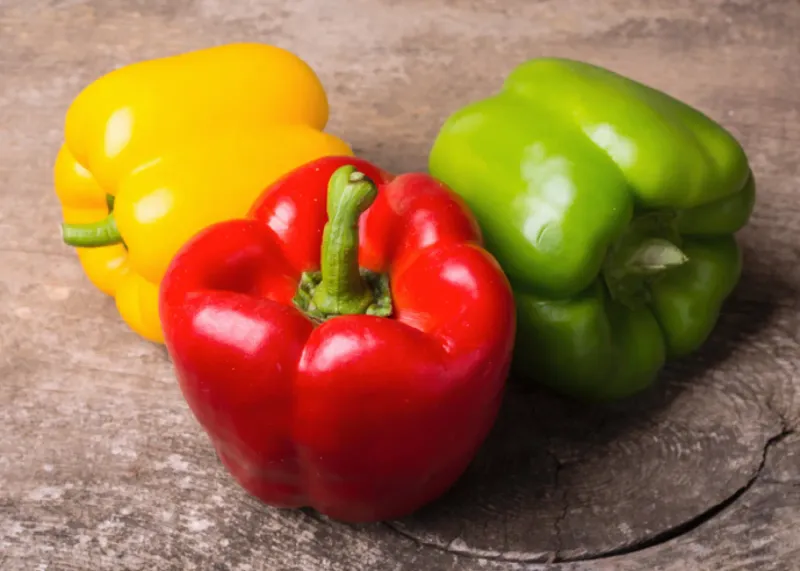
Bell peppers, with their vibrant colors and sweet flavor, offer only around 24 calories per cup. They are packed with vitamins C and A, which are vital for immune function and healthy skin. The crisp texture of bell peppers makes them a delightful addition to salads, stir-fries, or as a crunchy snack on their own. Their natural sweetness enhances any dish, whether cooked or raw. Bell peppers also contain antioxidants that fight inflammation and support eye health. Enjoy them sliced, diced, or stuffed for a nutritious and colorful meal.
6. Radishes
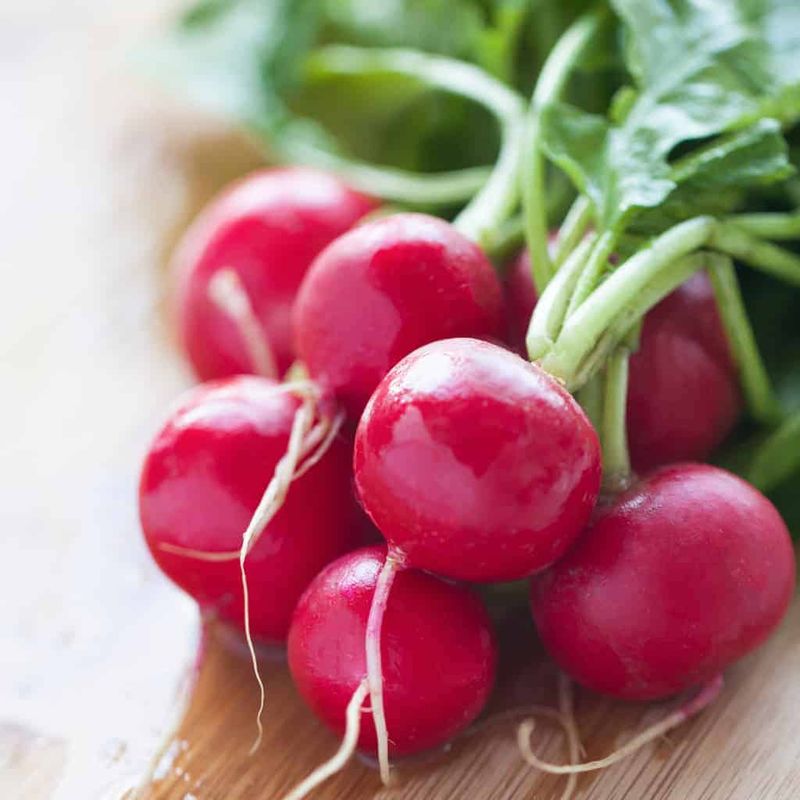
Radishes, with their peppery flavor and crunchy texture, are a low-calorie vegetable option, containing just 19 calories per cup. They add a spicy kick to salads and slaws, while their vibrant color enhances any dish. Radishes are high in vitamin C and potassium, which support immune function and heart health. Their fiber content aids in digestion, helping you stay full longer. Radishes can be enjoyed raw, roasted, or pickled, each method bringing out different aspects of their unique flavor profile.
7. Spinach
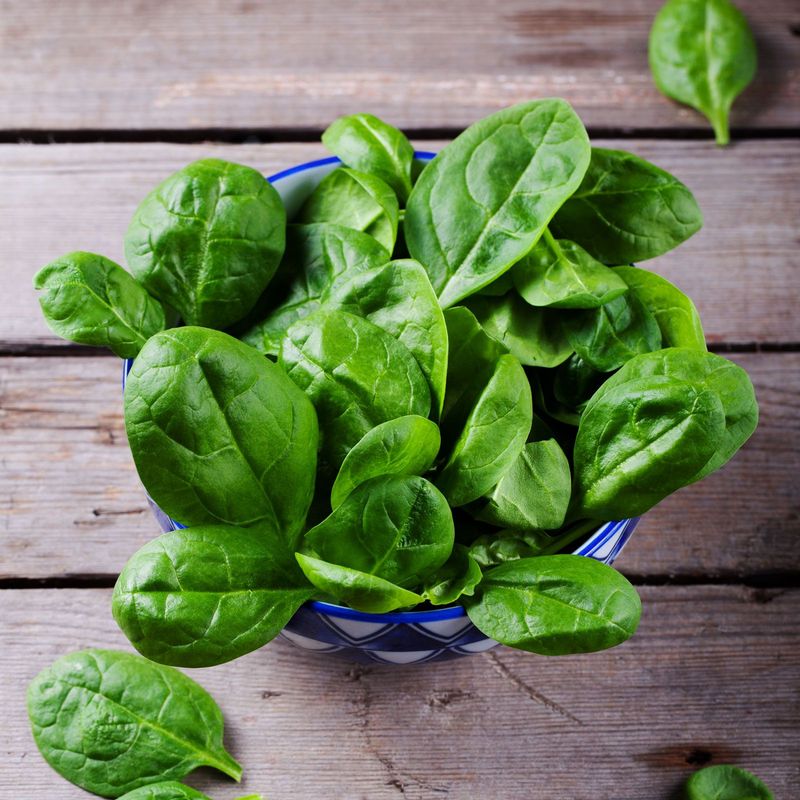
Spinach is a nutrient-dense green, offering only seven calories per cup while providing a rich source of vitamins K, A, and C. Its tender leaves and mild taste make it an excellent addition to salads, smoothies, and cooked dishes. Spinach supports bone health and boosts immunity with its high vitamin content. The leafy green also contains iron, essential for energy and oxygen transport in the body. Enjoy fresh spinach in salads or lightly sautéed to maintain its vast nutritional benefits as part of a balanced diet.
8. Tomatoes
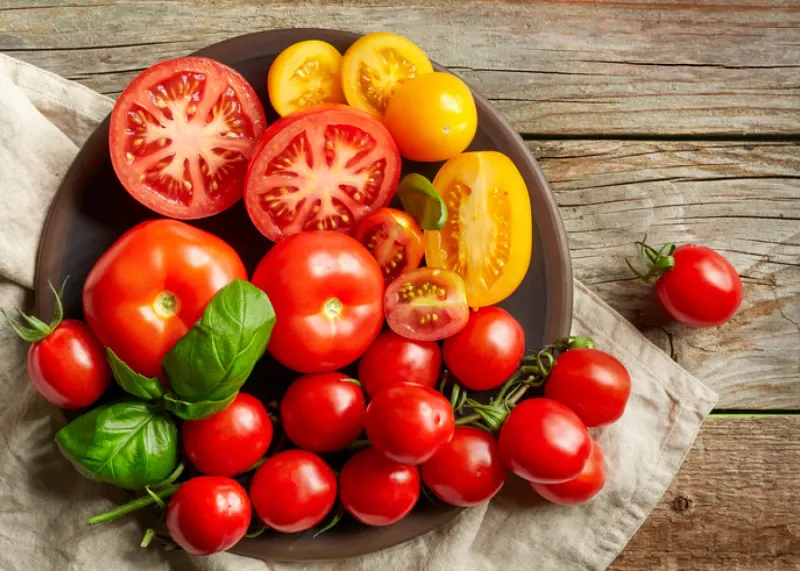
Tomatoes are a juicy, low-calorie fruit, with only 22 calories per medium-sized tomato. They are rich in lycopene, an antioxidant known for its cancer-fighting properties and support of heart health. Their vibrant color and tangy flavor add a fresh touch to salads, sandwiches, and sauces. Tomatoes are high in vitamins C and K, promoting skin health and bone strength. Whether enjoyed raw, roasted, or pureed, tomatoes provide a versatile and flavorful addition to various dishes, enhancing taste and nutritional value.
9. Cauliflower
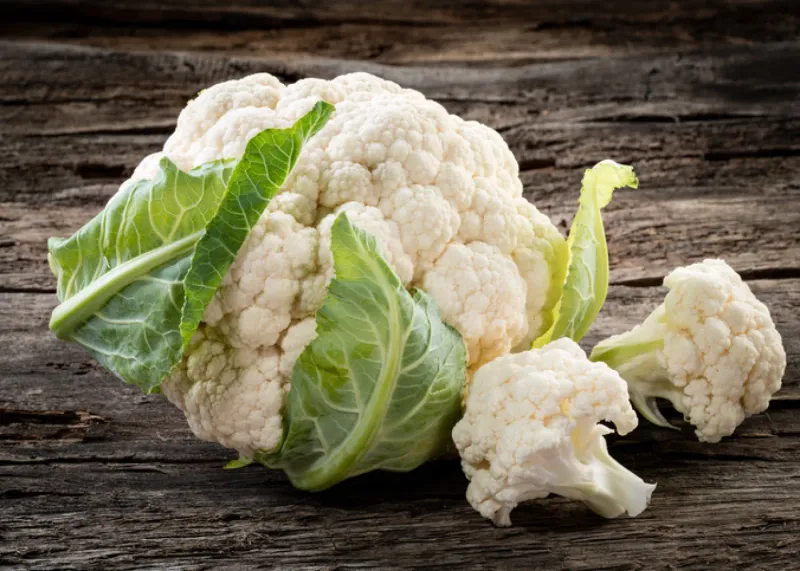
Cauliflower is a versatile vegetable that can be used as a low-calorie substitute for grains and legumes, with only 25 calories per cup. Its mild flavor and firm texture make it perfect for rice, pizza crust, or mashed alternatives. Cauliflower is rich in vitamins C and K, supporting immune function and bone health. The cruciferous vegetable also contains fiber, aiding digestion and prolonging satiety. Enjoy cauliflower roasted, steamed, or raw, taking advantage of its adaptability in various culinary applications.
10. Mushrooms
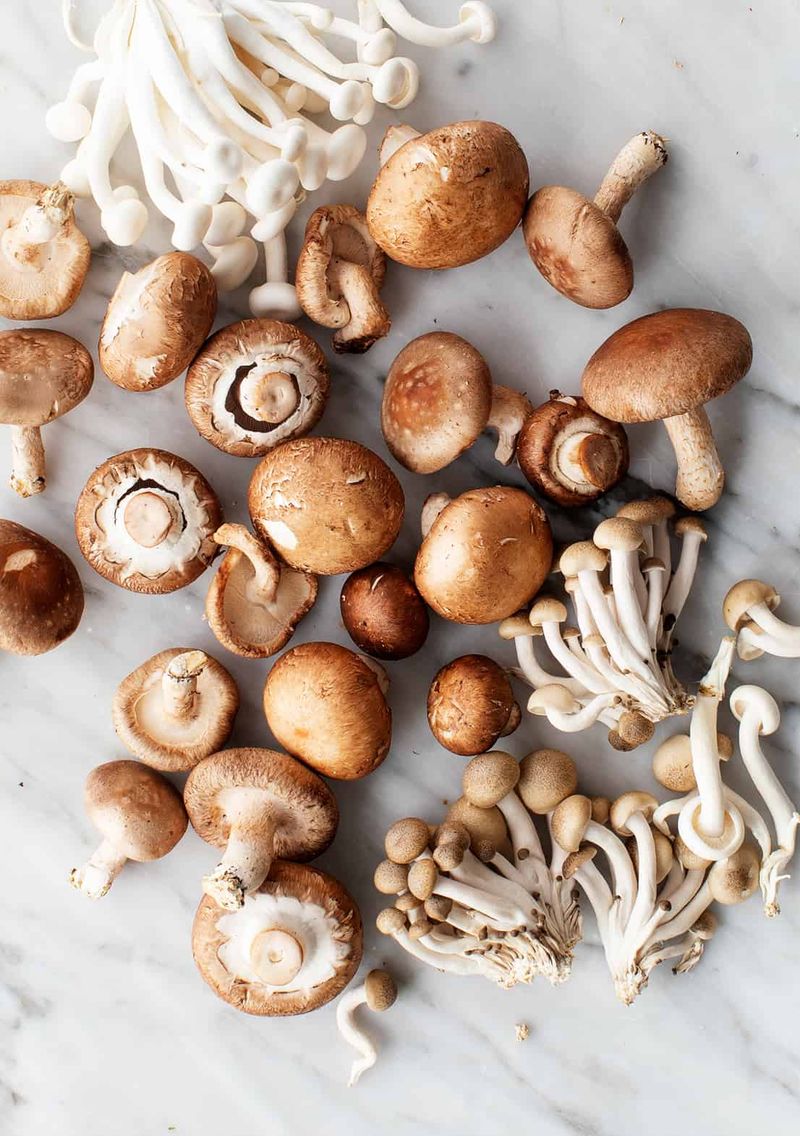
Mushrooms are a unique and flavorful addition to meals, with only 15 calories per cup. Their earthy taste and meaty texture make them a great substitute for meat in vegetarian dishes. Mushrooms are rich in B vitamins and selenium, supporting energy production and immune function. They also contain antioxidants that protect against cell damage. Whether grilled, sautéed, or baked, mushrooms add depth and umami flavor to any dish. Incorporate them into pastas, salads, or as a standalone side for a nutritious boost.
11. Asparagus
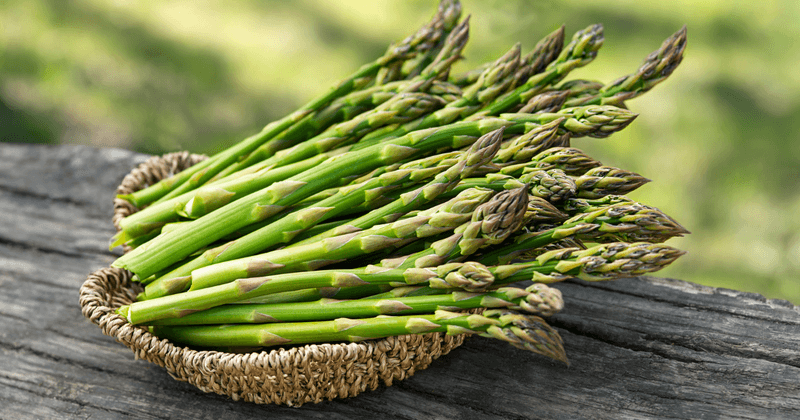
Asparagus is a flavorful, low-calorie vegetable, with only 20 calories per cup. Its tender spears and slightly nutty taste make it a delicious addition to any meal. Asparagus is high in vitamins A, C, and K, which are important for vision, immunity, and bone health. The vegetable is also a natural diuretic, helping to reduce bloating. Enjoy asparagus roasted, steamed, or grilled for a healthy and satisfying side dish. Its unique flavor and texture make it a favorite among health-conscious eaters.
12. Broccoli
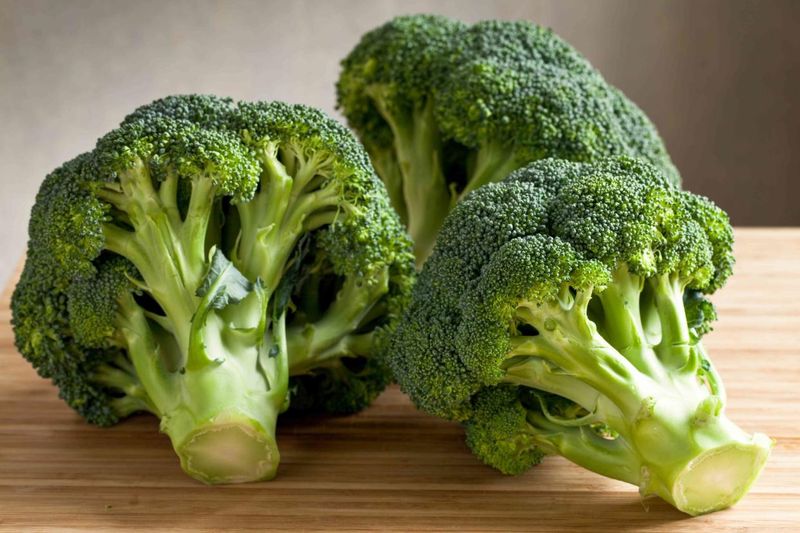
Broccoli is a nutrient powerhouse, offering only 31 calories per cup while providing a wealth of vitamins C, K, and A. Its crunchy texture and slightly bitter taste make it a versatile addition to salads, stir-fries, and casseroles. Broccoli supports immune function and bone health with its rich vitamin content. The cruciferous vegetable is also high in fiber, aiding digestion and promoting satiety. Enjoy broccoli steamed, roasted, or raw, allowing its nutritional benefits to enhance your meals in delicious ways.
13. Cabbage
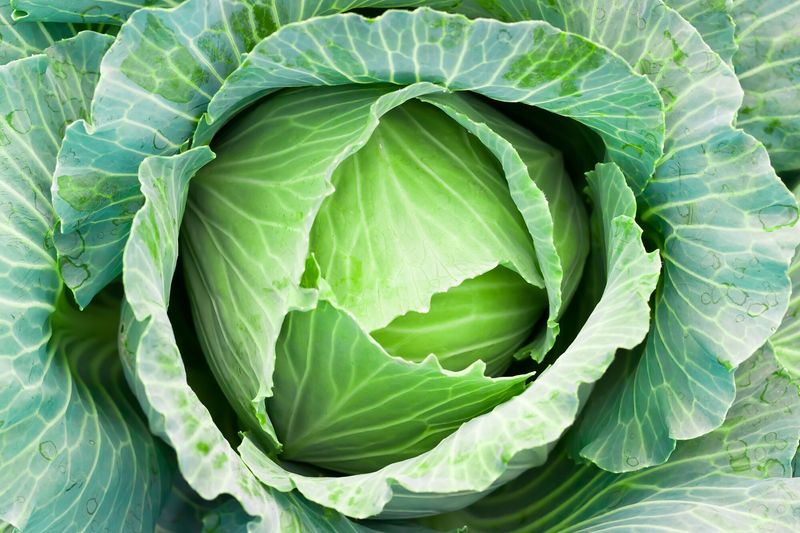
Cabbage is a low-calorie vegetable that offers only 22 calories per cup, making it an ideal choice for weight management. Its robust leaves and slightly peppery flavor add texture and taste to salads, slaws, and stir-fries. Cabbage is rich in vitamins C and K, which support immune health and bone strength. The vegetable’s high fiber content aids digestion and helps maintain fullness. Whether enjoyed raw, fermented, or cooked, cabbage provides a nutritious addition to a balanced diet, enhancing meals with its unique taste.
14. Carrots
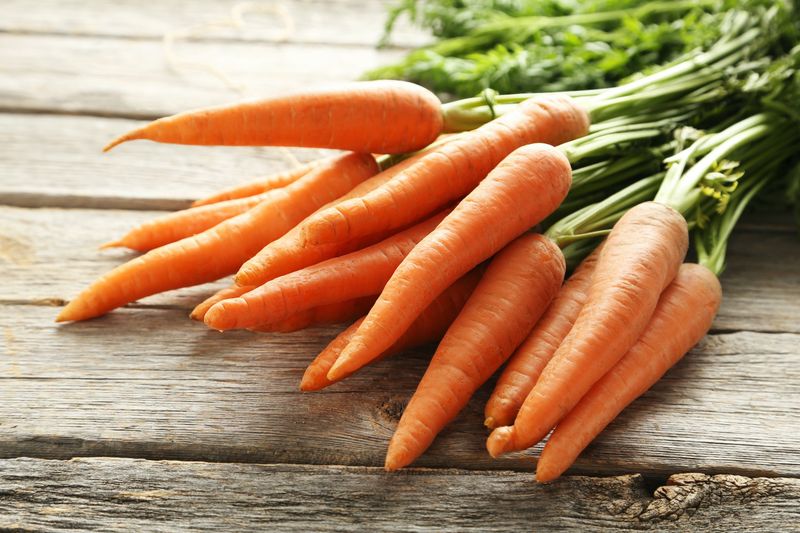
Carrots are a crunchy, slightly sweet vegetable that offers only 41 calories per cup. They are rich in beta-carotene, which the body converts to vitamin A, supporting vision and immune health. This vibrant vegetable is high in fiber, promoting digestion and keeping you satisfied. Enjoy carrots raw as a snack, roasted for a sweet caramelized flavor, or in soups and stews for added nutrition. Their natural sweetness and vibrant color make them a favorite among both kids and adults, adding a nutritious boost to any meal.
15. Radicchio
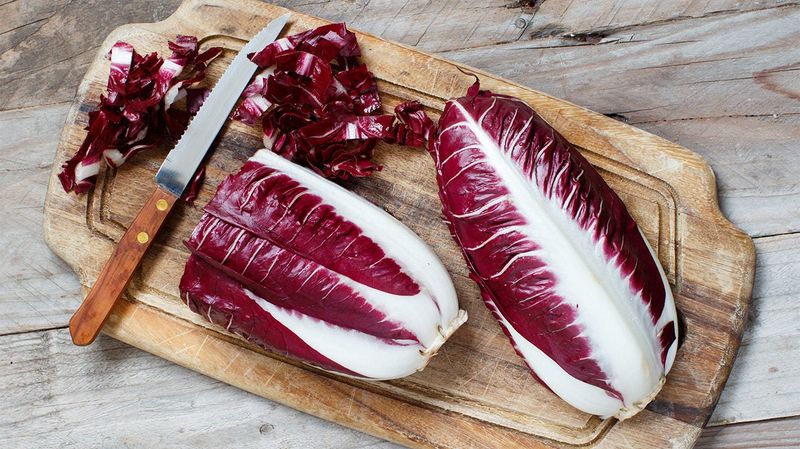
Radicchio, with its striking red and white leaves, offers a bold flavor and only 9 calories per cup. Its slightly bitter taste adds complexity to salads and dishes, while its vibrant color enhances presentation. Radicchio is rich in vitamin K and antioxidants, which support bone health and fight oxidative stress. The vegetable’s fiber content aids digestion, promoting fullness. Enjoy radicchio raw in salads or grilled to mellow its bitterness, adding a unique touch to your meals with both flavor and nutrition.
16. Kale
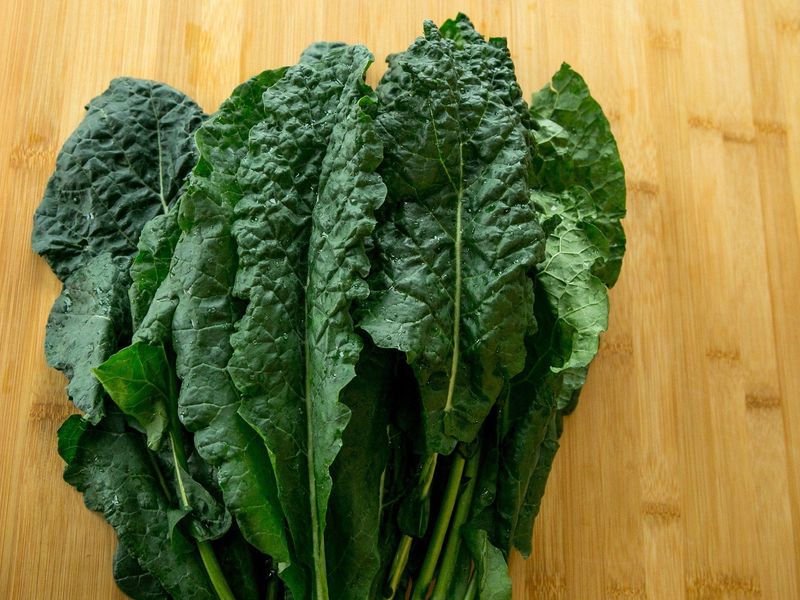
Kale is a nutritional powerhouse, providing only 33 calories per cup while being rich in vitamins A, C, and K. Its robust texture and slightly bitter flavor make it a versatile addition to salads, smoothies, and cooked dishes. Kale supports bone health and boosts immunity with its high vitamin content. The leafy green also contains antioxidants and fiber, promoting overall health and digestion. Enjoy kale raw, sautéed, or baked into chips for a crunchy, healthy snack that adds variety to your diet.
17. Green Beans
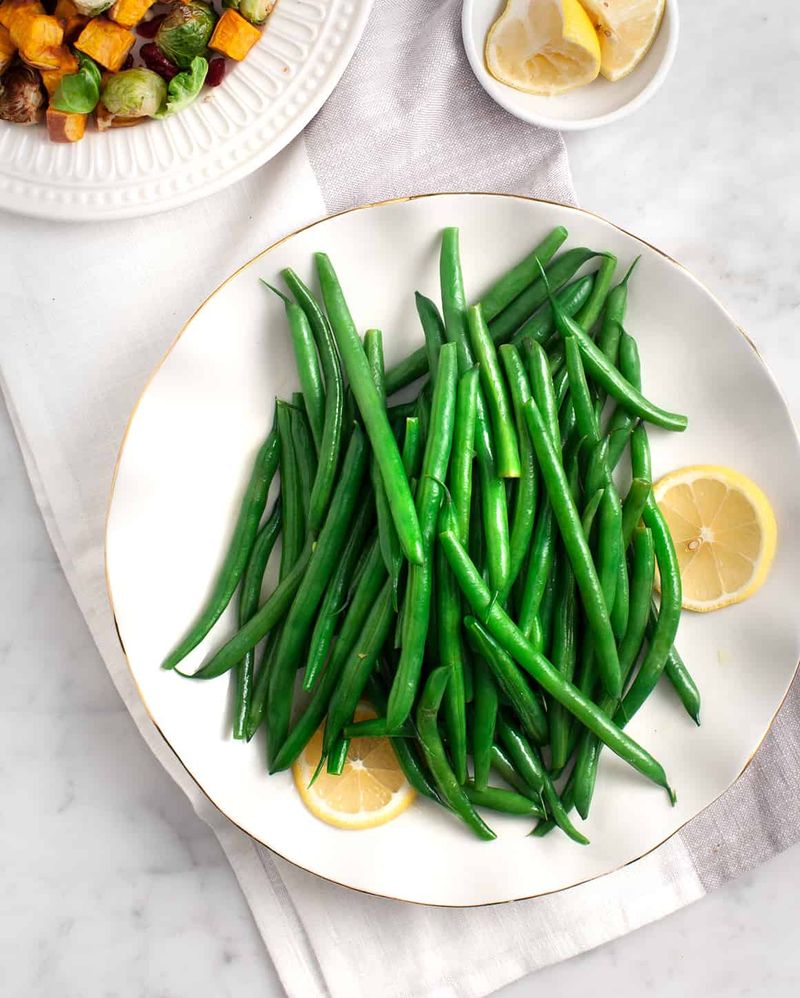
Green beans offer a satisfying crunch and only 31 calories per cup, making them an excellent choice for a low-calorie diet. Their fresh, slightly sweet flavor pairs well with various dishes, from salads to stir-fries. Green beans are high in vitamins C and K, supporting immune function and bone health. The vegetable also contains fiber, aiding digestion and enhancing satiety. Enjoy green beans steamed, sautéed, or roasted, allowing their natural sweetness and nutritional benefits to complement your meals.
18. Turnips
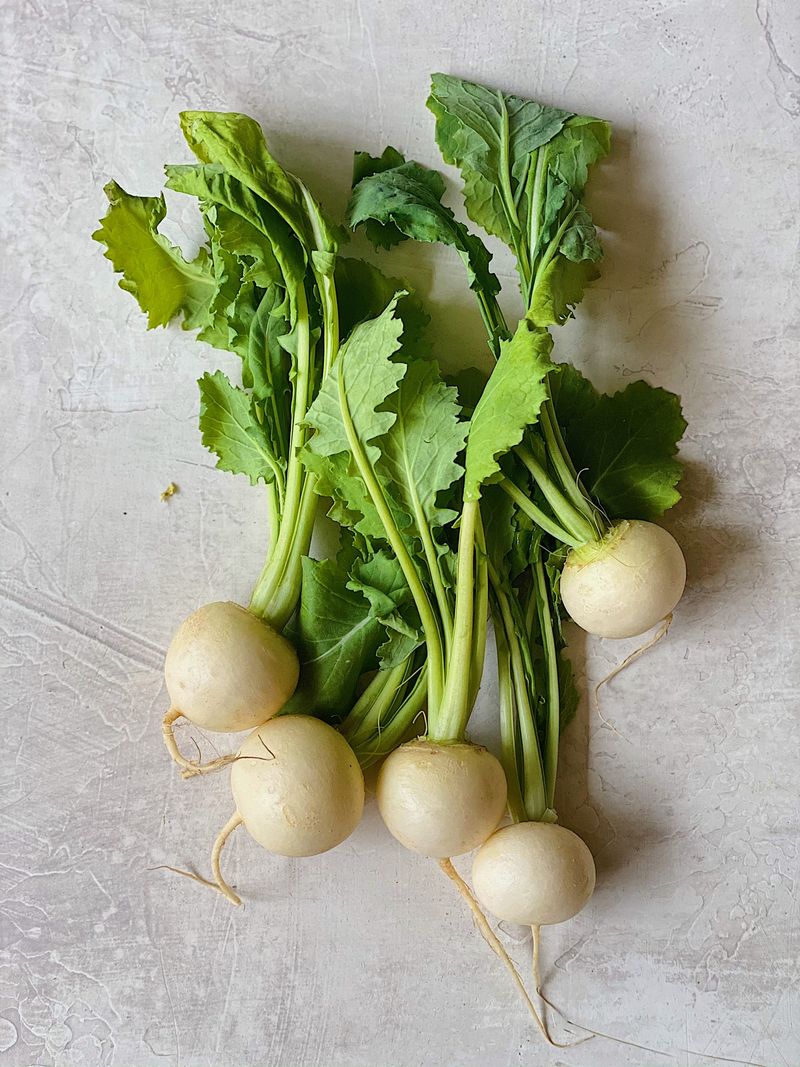
Turnips, with their mildly peppery taste and crunchy texture, offer only 36 calories per cup. They are rich in vitamin C and contain various antioxidants that support immune health. Their fiber content aids in digestion and keeps you feeling full. Turnips can be enjoyed raw in salads, roasted for a caramelized flavor, or mashed as a low-calorie alternative to potatoes. Their versatility and unique flavor make them a valuable addition to a balanced diet, enhancing meals with both nutrition and taste.
19. Brussels Sprouts
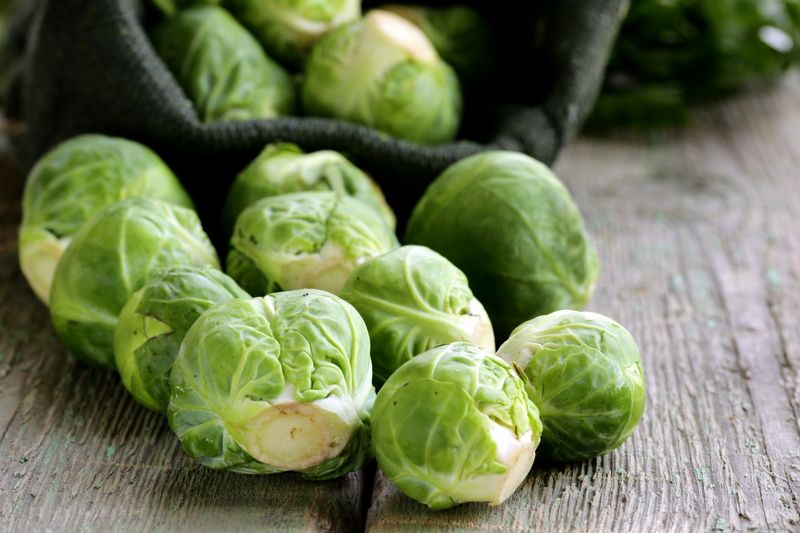
Brussels sprouts are a highly nutritious vegetable, offering only 38 calories per cup while being packed with vitamins K and C. Their slightly nutty and earthy flavor makes them a delightful addition to any meal. Brussels sprouts are high in fiber, promoting digestion and satiety. They also contain antioxidants that support cellular health. Enjoy them roasted, steamed, or sautéed, taking advantage of their rich nutritional profile and distinct taste. These miniature cabbages provide a flavorful and healthy option for your diet.
20. Arugula
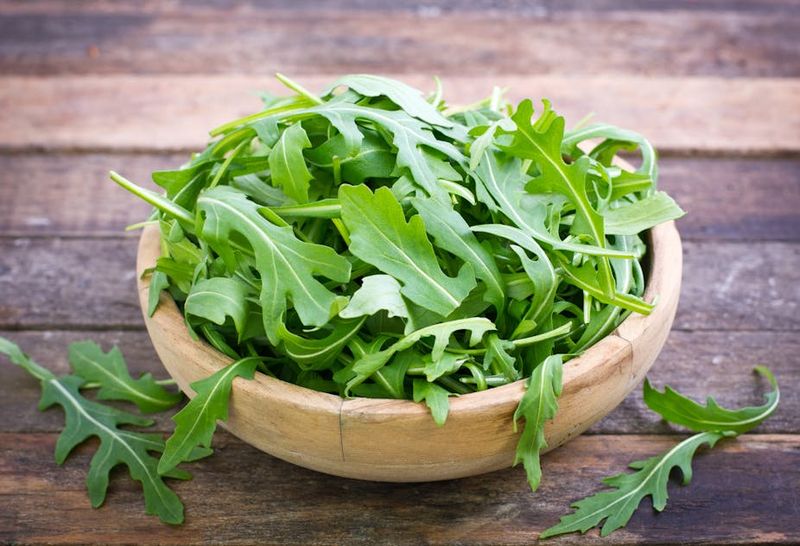
Arugula, known for its peppery flavor and tender leaves, contains only 5 calories per cup. This leafy green adds a zesty kick to salads and sandwiches, enhancing both flavor and presentation. Arugula is rich in vitamins K and A, supporting bone health and vision. Its high water content and fiber aid digestion and hydration. Enjoy arugula raw in salads or as a garnish, taking advantage of its unique taste and nutritional benefits. This versatile green is a favorite among chefs and home cooks alike.
